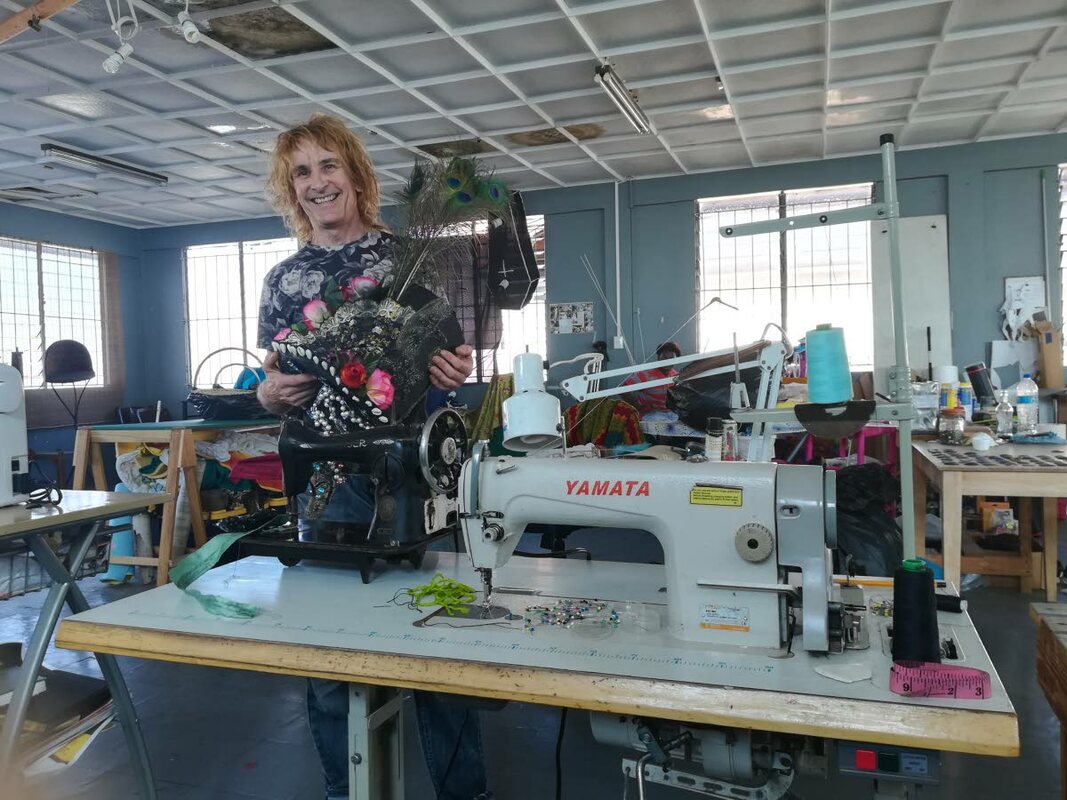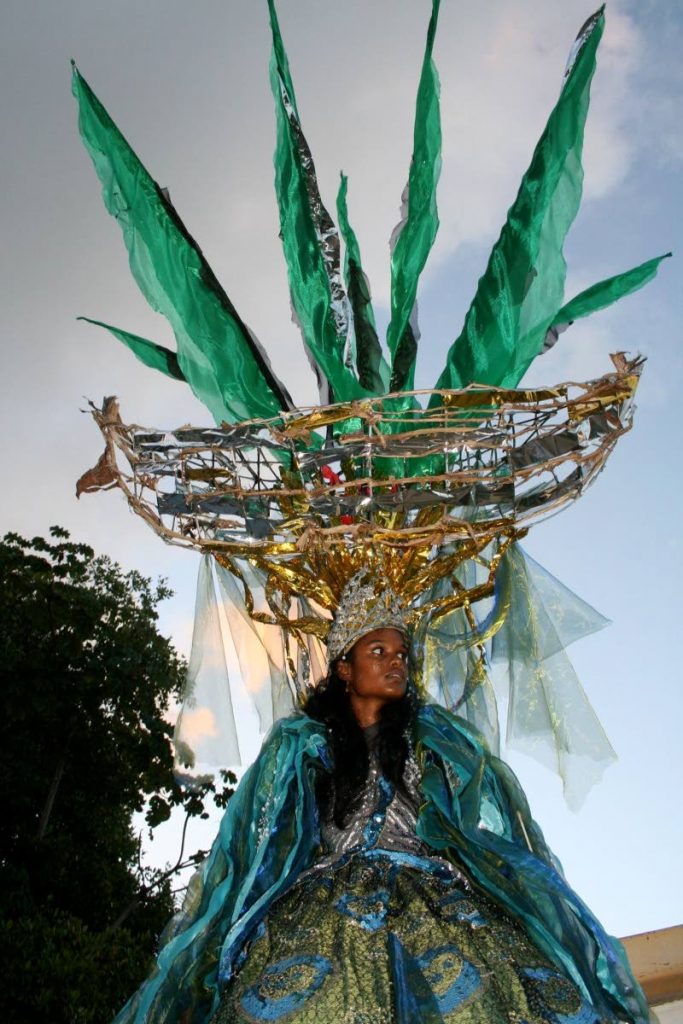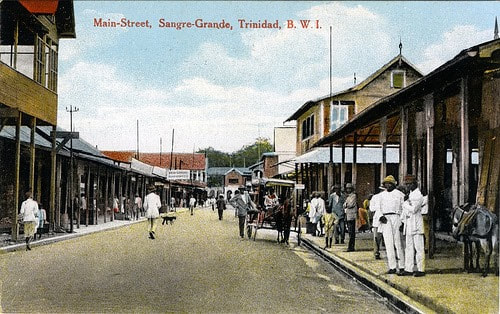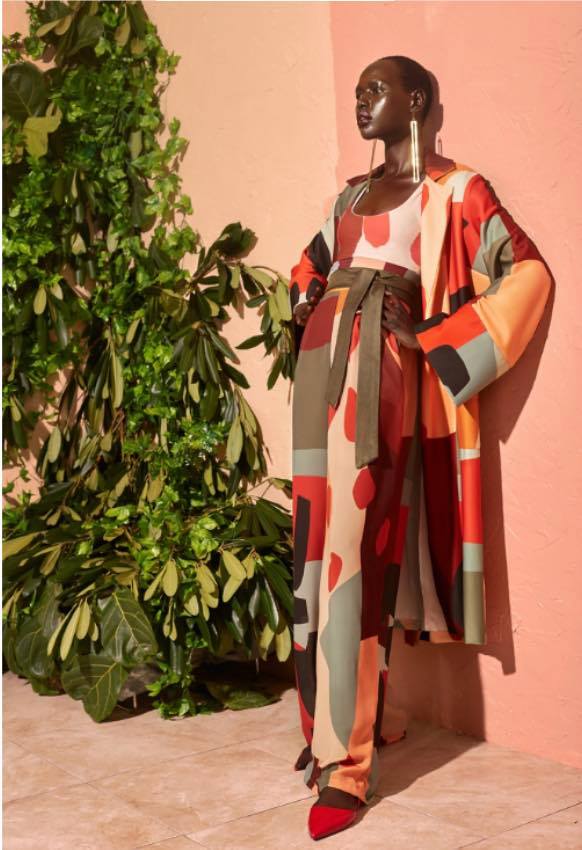 Caribbean Airlines Limited (CAL) has won the Caribbean’s Leading Airline Award for the 10th consecutive year and the Caribbean’s Leading Airline Brand Award for the third consecutive year, while Tobago’s Coco Reef Resort & Spa has won Caribbean Leading Hotel Award for the 15th consecutive year. The winners of the World Travel Awards 2019 (Caribbean and North America) were announced during a Gala Event at Sandals Resort, Montego Bay, Jamaica on Monday evening. In congratulating T&T’s winners, Tourism Minister Randall Mitchell, said that the country’s tourism product will only gain from these achievements. “All stakeholders, including citizens, must continue to further enhance and market our unique tourism product,” Minister Mitchell said. He is encouraging all tourism operators to continue to reinvest in their respective plants and operations to ensure there is a quality tourism offering. Nominations were submitted from several countries in the region, with St Lucia winning the Caribbean’s Leading Honeymoon Destination Award 2019; Jamaica winning the Caribbean’s Leading Destination 2019; Turks & Caicos being awarded the top prize for the Caribbean’s Leading Beach Destination 2019 and Sandals Resorts International winning the Caribbean Leading Hotel Brand 2019. National awards were also presented at the WTA Gala event: · Tobago’s Leading Car Rental Company 2019 – Avis · Tobago’s Leading Hotel 2019 – Blue Haven Hotel · Tobago’s Leading Resort 2019 – Coco Reef Resort & Spa · Trinidad’s Leading Car Rental Company 2019 – Avis · Trinidad’s Leading Hotel 2019 – Hilton Trinidad & Conference Centre · Trinidad’s Leading Hotel Suite 2019 – Presidential Suite, Hilton Trinidad & Conference Centre. The winners were determined via online voting from December 11, 2018 to January 10, 2019. World Travel Awards, the organization which hosts the event was established to support, promote and develop the global travel and tourism industry by identifying and rewarding excellence and inspiring its practitioners to continually raise the standards of their product and service offering.
0 Comments
Vintage Singer: British designer Alan Vaughan prefers to use an old Singer machine over the modern plastic machine at the Granderson Lab, Erthig Road, Belmont. Photo by Josh Surtees During his 20-year love affair with Trinidad Carnival, British mas man Alan Vaughan has won competitions and friends along the way. This year he’s back with another stunning West African-themed moko jumbie band. From the back stairs of a spacious open-plan studio, Alan Vaughan gazes over the rusty rooftops of Belmont. In the distance, the spire of St Margaret of Antioch Church pokes its head up. Beyond it, the green hills undulate towards Morvant. “It’s all very close together,” he says, looking at the tightly packed houses in Port of Spain’s oldest neighbourhood. He’s been encamped in Belmont for weeks, making mas for his new band Moko Somokow. After posing for a picture, Vaughan returns to his desk in the workspace he shares with other artists. His friend and collaborator Kriston Chen has just brought him a vintage Singer sewing machine. “I prefer these old solid ones to the modern plastic,” he says pointing at the other sewing machines on the tables around him. He’s upstairs at Granderson Lab (the G and R have fallen off the sign on the door) on Erthig Road. The former printing press was taken over a few years ago by the owners of Alice Yard and turned into a workshop for a fashion company and other artistic enterprises. It’s a drastic change from Vaughan’s usual setting in Newcastle, north-east England and a departure from the familiar surroundings of Taradale where his erstwhile moko jumbie band, Touch D Sky, are based. He’s been coming to Trinidad for 20 years and since 2012 the two-phase housing development built on former cane fields outside San Fernando has been his Carnival headquarters. “We started off in a squat in an empty house and the police came and threw us out, so we ended up making the whole mas in one of the boys’ bedrooms,” he laughs. In the five years since Touch D Sky’s founders, Adrian Young and Jonadiah “JJ” Gonzales, invited Vaughan (“Mr Alan” to his friends) to design for the band, he has not only learned how to sew (his background is in sculpture and painting) but also taught himself how to stilt-walk. “We wanted to move things on,” he explains. “Up until then the whole experience of being a moko jumbie was being called up to ‘do a run’ at a fete…there were no moko jumbies saying ‘we want to bring out our own mas.’” By 2015, he had moved things on to a level nobody could have predicted, becoming the first British designer in history to win the Carnival Queen competition when Stephanie Kanhai performed Sweet Waters Of Africa dressed in Vaughan’s interpretation of the African goddess Oshun. Queen of Carnival: Stephanie Kanhai won the 2105 Queen of Carnival crown in her portrayal of The Sweet Waters of Africa, designed by Alan Vaughan. Photo courtesy Alan Vaughan Smiling at the judges from ear to ear, Kanhai also became the first moko jumbie to win the crown. “People still grumble about that now,” says Vaughan. “Moko jumbies aren’t supposed to win when you have people entering these big expensive float designs.” The boat-shaped headpiece Kanhai wore symbolised, he says, “the African blood that travelled over the Atlantic and is still flowing on this side of the Atlantic.” His mas band that year was named Crossing the River, after the Caryl Phillips novel about the global migration of African culture. The book was an epiphany for Vaughan who had become besotted with West African culture, art and religion since visiting Afrocentric parts of Brazil in the 1990s. “There’s a parallel world going on in Brazil that’s right obvious and I found it really hard to find in Trinidad – for years I couldn’t see it. Even in Rio, a big commercial city, on a street corner you’ll see some flowers, a candle, some cigarettes and a bit of rum, for Eshu.” “New Year’s Eve, Copacabana beach is just full of people sending little boats out for Yemanja. It’s part of so many people’s lives – the spiritual life going on at the same time as the physical. Bata drums in the night, paper balloons crossing the sky for St Anthony.” With Touch D Sky on hiatus for 2018, Vaughan has launched the spin-off band Moko Somokow (meaning “spirit family” in Mali’s Bambara language) and has decided he will perform in the Carnival King competition himself, for the first time. “I want to walk across that stage,” he says, smiling. “Before I’m too old.” His entry is called The Magnificent Return of Sundjata, after the king who united the 12 tribes of Mali together to form an empire in the 13th century. Griots in Mali still tell the epic of his prophecy, birth and return from exile. The aesthetic themes of the costume are familiar to followers of his work – richly coloured fabric adorned with shimmering pieces of material that flutter like bird feathers, and swirly sequined patterns that glitter in the light. Asked what his artistic inspirations are – leaving aside the fact he has played mas in bands by Peter Minshall and Brian Mac Farlane – he somewhat surprisingly references medieval paintings. “It’s the richness of the detail and because they’re not dealing with reality.” Growing up in Gloucestershire in rural south-west England, he was a punk rocker with orange hair, a plastic rain mac and Day-Glo socks by the time he left home to attend Cheltenham College of Art and Design in 1978. “That was my awakening year,” he says nostalgically. “I’d failed my art A-Level but they’d given me a place anyway and when I got there they said, ‘well that’s great, everyone who fails is a far better artist.’” “It was the year that taught me to think. I still remember the head of fashion saying, ‘I always look at fashion like body sculpture.’” That statement has followed him through his life’s work and still informs his mas making today. He went on to study fine art at the University of Nottingham, then took a job as artist in residence on the psychiatric ward of a hospital in Newcastle – the city he now calls home – before raising funds to open the North Tyneside Arts Studio, which caters for people with mental health problems. By the mid-90s, a Conservative government that had decimated public funding in Britain for everything from hospitals to school meals had begun withdrawing support from arts projects, including his. Depressed at constant attempts to shut down the thing he had built, Vaughan took the advice of a Trinidadian roommate and came over for Carnival. “I would come and shut myself away in Maracas Valley and not speak to anyone for three months and just make bits of art out of junk,” he chuckles. “I didn’t know any artists, I wouldn’t go and socialise, it was just my time.” Trinidad was a life-changing experience for Vaughan, particularly his fascination with moko jumbies “appearing out of nowhere.” “And it’s often these quite unruly young lads, so there’s this hint of danger and menace going on, you don’t know what’s going to happen.” He shares some of these experiences back in grey, drizzly Newcastle, teaching children moko jumbie walking at a local community centre. In 2015, he brought one of them down to the British Museum in London and flew Kanhai and Gonzalez over from Trinidad, to perform together for crowds outside the world-famous institution. But despite his fondness for the Caribbean and for Europe, Vaughan’s heart really lies in Africa. “Africa is a different way of thinking,” he says. He recalls a conversation he once had with the “mesmeric” South African professor Pitika Ntuli, who told him a story about the Ndebele women who paint their houses with geometric shapes, “almost like Mondrian paintings” and in the rainy season it all washes off. “This British missionary aid worker goes over there and tells them about this exterior household paint, and the women just look at him in horror saying, ‘why would we want to do that?’ And the missionary says, ‘so it won’t wash off and you don’t have to redo it.’ So the women tell him, ‘but we’ll want a different pattern next year because our lives will have changed.’” Ntuli’s conclusion was that the European view of art is to create “little forevers”, like paintings that are exhibited and preserved for centuries, while in Africa they are “forever creating”. “You do something, it has a purpose and then life moves on and you recreate.” The annual, seasonal renewal of Trinidad Carnival is arguably similar, even if the inspirations hark back to longstanding traditions. But what inspires Vaughan to make mas? He sums it up quite simply but poetically. “It’s the same as writing a novel. You do it because you think there’s something important to say, but you hope other people are going to read it and enjoy it.” Source: Newsday, January 27, 2019  King Eshu: Jonadiah Gonzales appears to fly out of the trees as Eshu Ajagura, a Carnival king designed by Alan Vaughan in 2016. Photo courtesy Alan Vaughan.
Sangre Grande was a town which grew out of the cocoa boom of the late 19th and early 20th centuries. The Trinidad Government Railway reached the little settlement in 1897 and from them on, it grew by leaps and bounds, becoming the chief town of Northeastern Trinidad. This postcard scene dates from around 1905 and shows Sangre Grande in its heyday as the centre for the cocoa wealth of the area. At the very far end of the street is the old police station while the covered sidewalks are reminiscent of an American wild west town.
Source: Virtual Museum of Trinidad and Tobago  The word "cocktail" is tossed around pretty loosely these days, used to describe just about any liquid sum that is greater than its parts. That wasn't always the case. When the term was first coined by a newspaper editor back in 1806, it referred specifically to a beverage comprised of spirits, sugar, water, and bitters. Today, we call it an Old Fashioned, and anyone who's ever made one, well, the old-fashioned way, knows it can't be done without Angostura bitters. But what are Angostura bitters, and how did they earn their place in some of the most classic cocktails on the planet? What's with that label? In the interest of helping you go to the bar smarter, here are five facts worth learning about the best-known bottle of bitters. Angostura was developed as a cure for upset stomachs.As is typical in the spirits world, Angostura's place in society pre-dates its spot at the bar. All the way back in 1824, Dr. Johann Siegert—surgeon general for Venezuelan military leader Simón Bolívar—developed the stuff as a medicinal tonic for Bolívar's army. Created from a blend of herbs and spices, it was intended to cure upset stomachs. Originally called Dr. Siegert's Aromatic Bitters, it would later be renamed for the Venezuelan city of Angostura (now Ciudad Bolívar) where it was concocted. Operations eventually moved to Trinidad, where it is still produced today. That label was a mistake.Besides its bright yellow cap, what really distinguishes a bottle of Angostura bitters is the label: It's too big. As legend goes, once Siegert's sons took over the business from their dad, they set out to market the bitters however they could, which included entering them in a competition. In a scramble to get their product ready for judging, one brother was assigned the task of retrieving bottles, while another went to print labels. Due to a miscommunication or mistake, they ended up with labels too big for their bottles, or bottles too small for their labels. By the time they realized the error, it was too late to correct. Though Angostura lost the competition, a friendly judge suggested the brothers make that label their signature. The advice stuck. The recipe is a closely guarded secret.Allegedly, only five people in the entire world know the exact combination of herbs and spices that go into a bottle of Angostura. As the only people with the recipe, they've even made a pact to never fly together or so much as eat together at the same restaurant, should, god forbid, the worst happen, according to VinePair. Guessing how much of this is fact, fiction, or just good marketing is all part of the fun, but it's clear the secret formula is kept close to the chest. Some people use it as a cooking ingredient.As anyone who has ever cracked an old cookbook knows, the sixties and seventies were a weird time for food. (Check out this Twitter account for examples.) In 1961, the brand capitalized on some of that weirdness, releasing The Secret of Good Taste: The Angostura Cookbook. From turkey to pies to bean soup, the book suggests a number of ways to incorporate bitters into everyday cooking. Why not? Wisconsinites drink it by the glass.There's a bar in the Badger State called Nelsen’s Hall and Bitters Club that serves full shots of Angostura to patrons, a practice that's been kept alive since 1920. It began as a means of skirting the rules of Prohibition—it's simply a medicine for upset stomachs, after all—but as Punch reports, the tradition has lived on, giving Wisconsin the unique distinction of selling more Angostura per capita than any other state. Source: Esquire.com, January 2019  When you meet Myles Marbella, you quickly learn that she does not easily take no for an answer. That tenacity and determination were vital to her simultaneously holding the portfolios of co-owner and Executive Chef at Roll Sushi and owner of Myles Express at the age of 23. Her ability to say ‘no’ extended even to her parents. Although they wanted her to pursue architecture and petroleum engineering, her love for cooking and strong-willed nature led her to pursue the culinary arts at TTHTI instead. While studying, she started her first job working at Kaizen Sushi at the age of 19. While the experience helped, Hyatt Regency was always her end goal, as she wanted to become the first female sushi chef at the hotel, something that had never been accomplished before in Trinidad. Persistence is in her blood. Her drive to work at the Hyatt would not be outweighed by idle rejection. “I applied 10 times to work at the Hyatt and got declined nine of those times”. She was there for about six months and was already receiving rave reviews about her sushi from guests, local and international. It was there she also met her future business partner, Dana Balliram. Like the other guests, Balliram was impressed with not just with Myles’ sushi but her work ethic. Balliram said that she saw a lot of potential in Myles and decided to invest in her. “She has the potential, she is a house of talent. Being around Myles and seeing what she’s done, what she’s offered people and her creativity, I realized that she has talent worth investing in. All she needed was that push to bring it out and present to the world.” She later also worked alongside Joe Brown (Jaffa at the Oval, Solimar) but it was Dana's faith in her craft that led to her recommending Myles for the role of Executive Chef for a new sushi spot on Ariapita Avenue. She faced stiff competition at the time. Not only was she the lone female applying for the job, but she was going up against chefs who were many years her senior with more culinary experience. Myles, however, had a cutting edge with a unique taste and presentation, which led to her becoming Executive Chef at Roll at 23, a rarity in the industry. While it was a monumental achievement in itself, it wasn’t enough for Myles. When a business space became available downstairs from Roll, her business partner, Dana, was the one that pushed her to take it. “I know Myles’ potential and I knew that she could do so much more than sushi. She’s very creative in the culinary arts, always sampling with different tastes and styles of food.” The two played around with ideas, concepts and menu, eventually settling on a takeout spot, with a deli-style menu. Soon after, Myles Express was born. She has accomplished a lot such a short period of time at such a young age, but sometimes it can be a double-edged sword as she might not be taken as seriously given her young age. “It’s challenging, but I get strength because people like Dana push me; I sometimes find it challenging to manage people who are older than me but I’m learning and I’m conquering.” Running multiple businesses, of course, requires sacrifice. Her day starts at 4AM, where she preps to open Myles Express for 6AM to 1PM; from 1PM to 3PM she begins prep for Roll. She then naps for about an hour before working at Roll from 4PM to 1AM. However, when you love what you do, it doesn’t feel like too much of a sacrifice. "I always say do what you love, love what you do. You can’t give up, especially, if you have a dream. I learned that, especially with regard to Hyatt. I was turned down nine times! But this was my goal, I wanted to be the first female sushi chef there so I couldn’t give up.” At such a young age, Myles is an inspiration, not only for other entrepreneurs but young women as well. Her steadfast nature and refusal to take 'no' for an answer has allowed her to achieve her goals and break down barriers in a male-dominated industry. Source: The Loop T&T James Hackett, Founder and Creative Director of The Lush Kingdom was commissioned by NY-based designer Felisha Noel to design the prints for her new line which is currently being featured in Vogue’s January 2019 edition! James is also one of FashionTT’s VCIP designers
 IT was an emotional ceremony yesterday as the Express presented its 2018 Individual of the Year awards at the Radisson Hotel in Port of Spain. As brothers Ravi and Navin Kalpoo collected their award, they revealed that it was the one-year anniversary of their mother’s death. The Kalpoo brothers became local heroes following last October’s unprecedented flooding in Central and East Trinidad, rushing out to help rescue more than 300 people in distress in Kelly Village. Their mother, Doolarie Kalpoo, was known for her tireless community work. Source: Express, Feb 2019. Check out this video below... starts around 1:24 |
T&T news blogThe intent of this blog is to bring some news from home and other fun items. If you enjoy what you read, please leave us a comment.. Archives
July 2025
Categories
All
|







 RSS Feed
RSS Feed